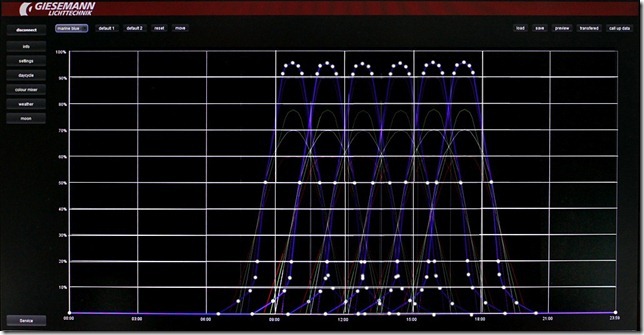The Giesemann LED line has had a few upgrades recently to give current and future owners a bit more control over their German LED fixtures. The company recently shared information on a new ‘Sunshift’ feature For Futura and Futura-S platforms along with new preconfigured LED lighting profiles.
Traditional parallel LED programs are usually controlled with one profile across all arrays or modules and limited what you could accomplish with lighting programs. In order to give you the most flexibility, the Giesemann Futura was originally developed to run separate profiles for each board in the array. Now the company wants to take it a step farther with the ‘Sunshift’ program allowing you to not only program each board in the array, but with an adjustable time lag for each board or even channel.
Why would this be useful? According to the company, it allows you to replicate sunlight transition across the aquarium during the daytime phase. Another reason this could be useful is if you wanted to expose corals to a higher intensity than normal to induce better coloration but limit the effects of extended over exposure. This is also useful for really dialing in a robust lighting program for corals by changing the lighting in a small area vs. moving the coral itself to fringes of the tank.
Now that your Giesemann LED has more options to create intense and complicated profiles, you might be a bit overwhelmed. To help things out, the company is going to be sharing pre-designed profiles available for direct download from the Giesemann website.
Configured for both the Futura and Teszla/Teszla-XT Bluetooth interfaces, these profiles will available for both Saltwater and Freshwater platforms in later this month or in early March.
Some profiles include a default profile for new aquarium installations, an acclimation profile for those switching to Giesemann LED from other lighting sources, and a range of spectral simulation profiles tuned to replicate environments such as a shallow reef-flat, lagoon or different reef depths.



